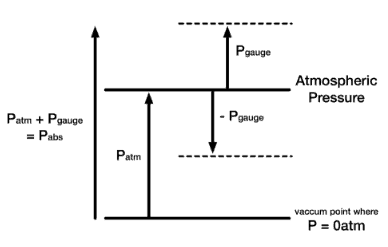The Standard Atmospheric Pressure
Atmospheric Pressure. Atmospheric pressure is the pressure in the surrounding air at – or “close” to – the earth’s surface. The atmospheric pressure varies with temperature and altitude above sea level. The Standard Atmospheric Pressure approximates to the average pressure at sea-level at the latitude 45° N. The Standard Atmospheric Pressure is defined at sea-level at 273oK (0oC) and is:
- 101325 Pa
- 1.01325 bar
- 14.696 psi
- 760 mmHg
- 760 torr
